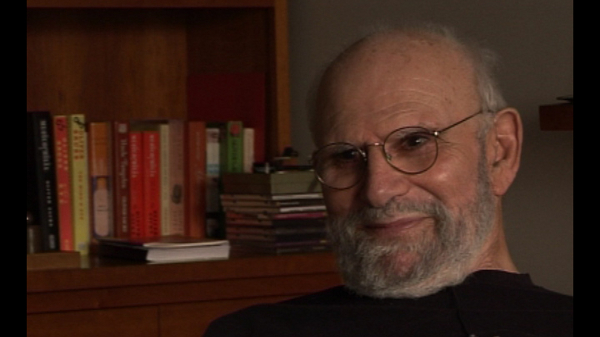NEXT STORY

The Sense of Movement by Thom Gunn
RELATED STORIES

NEXT STORY

The Sense of Movement by Thom Gunn
RELATED STORIES


|
Views | Duration | |
|---|---|---|---|
| 271. The second half of Uncle Tungsten: inspiration and... | 193 | 03:11 | |
| 272. Uncle Tungsten: I want my work delivered in full, not... | 181 | 01:30 | |
| 273. My handsome mug | 1 | 268 | 01:10 |
| 274. My love of Kew Gardens | 246 | 01:10 | |
| 275. The Sense of Movement by Thom Gunn | 326 | 02:08 | |
| 276. Thom Gunn's comments on my writing style | 256 | 01:44 | |
| 277. A scary first experience of steep Filbert Street, San Francisco | 211 | 01:14 | |
| 278. My last meeting with Thom Gunn and his death | 1 | 540 | 03:59 |
| 279. Thom Gunn's unique style of poetry | 312 | 01:34 | |
| 280. Thom Gunn was an excellent teacher | 256 | 00:53 |


Botanical gardens. One of the…the other great place for me in my youth, beside the South Kensington museums and the public library, was Kew, the great botanical garden at Kew. Both my mother and a sister of hers – a favourite aunt of mine, Lenny – were keen on botany and on gardening and on ferns and fern-like things in particular. But I would often go with my aunt to Kew. We would take a... a train from Brondesbury to Kew Gardens. This is one of the oldest lines, I think, in... in England, or lines of its sort. I think it had been built in about 1870, or something like this, long before the tube. I had many favourite plants in Kew, but I think probably the two fernhouses, one... one for temperate ferns and one for tropical ferns, were my favourite. I loved the gold and silver ferns. Oh, if I start on what I loved, I’d go on forever. In New York – now I’ve lived in New York for 45, 46 years this month – the botanical garden here has been a major part of my life. When I worked at Beth Abraham, which I did for 40 years, from '66 to '06, I would walk in the botanical garden every day. It was just opposite.
Oliver Sacks (1933-2015) was born in England. Having obtained his medical degree at Oxford University, he moved to the USA. There he worked as a consultant neurologist at Beth Abraham Hospital where in 1966, he encountered a group of survivors of the global sleepy sickness of 1916-1927. Sacks treated these patients with the then-experimental drug L-Dopa producing astounding results which he described in his book Awakenings. Further cases of neurological disorders were described by Sacks with exceptional sympathy in another major book entitled The Man Who Mistook His Wife For A Hat which became an instant best seller on its publication in 1985. His other books drew on his rich experiences as a neurologist gleaned over almost five decades of professional practice. Sacks's work was recognized by prestigious institutions which awarded him numerous honours and prizes. These included the Lewis Thomas Prize given by Rockefeller University, which recognizes the scientist as poet. He was an honorary fellow of both the American Academy of Arts and Letters and the American Academy of Arts and Sciences, and held honorary degrees from many universities, including Oxford, the Karolinska Institute, Georgetown, Bard, Gallaudet, Tufts, and the Catholic University of Peru.
Title: My love of Kew Gardens
Listeners: Kate Edgar
Kate Edgar, previously Managing Editor at the Summit Books division of Simon and Schuster, began working with Oliver Sacks in 1983. She has served as editor and researcher on all of his books, and has been closely involved with various films and adaptations based on his work. As friend, assistant, and collaborator, she has accompanied Dr Sacks on many adventures around the world, clinical and otherwise.
Tags: Kew Gardens, South KensingtonNew York, Beth Abraham Hospital, New York Botanical Garden, Helena Landau, Elsie Landau Sacks
Duration: 1 minute, 10 seconds
Date story recorded: September 2011
Date story went live: 02 October 2012